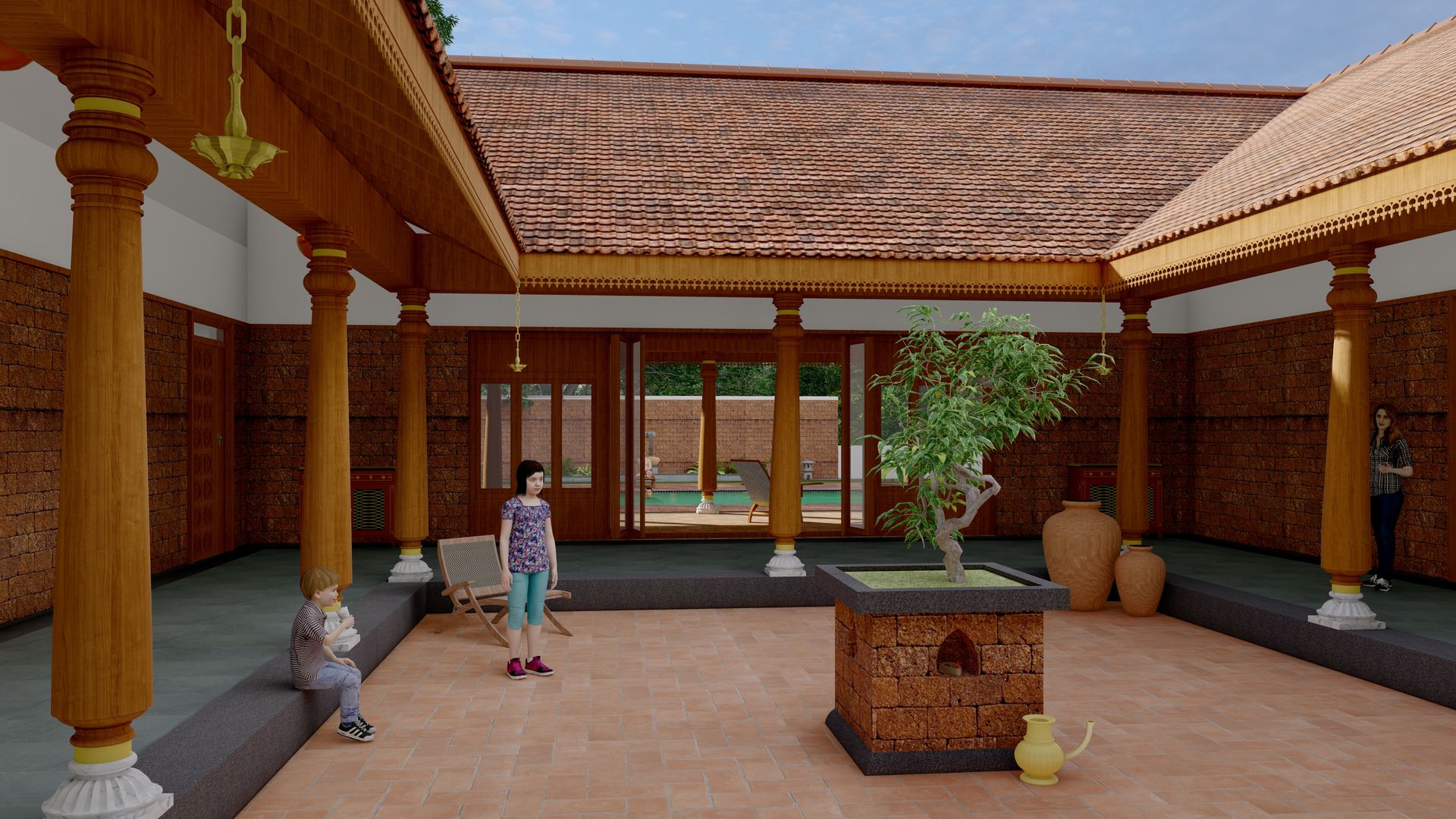Sustainable architecture in Kerala is making a powerful comeback. Blending ancient wisdom with modern techniques, this green movement is helping the state reduce carbon footprints while preserving its natural beauty.
With rising temperatures and unpredictable rains, eco-friendly homes are more than a trend. They are a necessity. This blog will help you understand sustainable design for Kerala and how to create a home that’s both comfortable and climate-conscious.
What We’ll Cover
- Understanding Sustainable Architecture in Kerala
- Old Practices and Their Limitations
- Modern Green Design in Kerala
- Benefits of Sustainable Architecture
- How to Build a Green Home in Kerala
- Case Study: A Green Home in Thrissur
- Top Methods for Sustainability
- Fixing Common Green Building Issues
- Future of Eco-Architecture in Kerala
- Common Questions
Understanding Sustainable Architecture in Kerala
Sustainable architecture means designing homes that use less energy, water, and resources while staying in tune with local climate. In Kerala, this means using sloped roofs, natural ventilation, rainwater harvesting, and eco-materials.
Kerala architecture that naturally cools and conserves energy

Important Point: Kerala’s humid climate requires designs that encourage air flow and shade.
Old Practices and Their Limitations
Traditionally, Kerala homes used laterite bricks, clay tiles, and wood—all sustainable. But modern construction has shifted to concrete-heavy designs that trap heat and strain resources.
Common Mistakes:
- Ignoring cross ventilation
- Over-relying on artificial cooling
- Using non-local materials
Important Point: Modern buildings without Kerala-centric designs often suffer from high electricity bills and poor comfort.
Modern Green Design in Kerala
Today’s architects blend Vastu, local materials, and new green tech to build smart homes. Think solar panels, mud bricks, skylights, and natural shading from trees.
Main Ideas:
- Orientation based on sun and wind
- Use of terracotta, bamboo, and fly ash bricks
- Greywater recycling systems
Important Point: Blending traditional wisdom with new tools gives best results.
Benefits of Sustainable Architecture
Eco-friendly buildings reduce energy use, stay cooler, and cost less over time. Plus, they promote mental well-being with open airy spaces.
Improvements:
- 40% lower energy bills
- 30% cooler indoor temps
- Less maintenance
Important Point: Small design changes lead to big savings and better health.
How to Build a Green Home in Kerala
First Step: Site and Orientation
Pick a plot with natural shade and plan the house to face the right direction for wind and sun.
Second Step: Local Materials
Use clay, laterite, or mud bricks. Avoid polished marble and synthetic paint.
Third Step: Eco-Features
Install solar panels, rainwater tanks, and ventilated roofing.
Expert Tips:
- Plant native trees for shade
- Use light-coloured walls to reflect heat
- Keep open courtyards
Case Study: A Green Home in Thrissur
The Problem
The Menon family wanted a home that stayed cool in summer without AC.
What They Did
They used mud blocks, installed skylights, and kept an open plan with wind tunnels.
What Happened
Electric bills dropped by 45% and they enjoy better air quality.
Best Practices
Method 1: Passive Cooling
Design with airflow in mind. Keep windows opposite each other.
Method 2: Harvest Rain
Kerala gets heavy rain. Use sloped roofs and storage tanks.
Method 3: Minimal Concrete
Limit RCC and use filler slab or mud roofing.
Important Point: Combine multiple green practices for best outcomes.
Solving Common Problems
Problem 1: Cost Concerns
Solution: Use local materials and skip expensive fixtures.
Problem 2: Skilled Labour Shortage
Solution: Hire firms that specialise in green building.
Problem 3: Dampness
Solution: Use proper plinth height and roof overhangs.
Future of Eco-Architecture in Kerala
Trend 1: Earth-Cooled Homes
Subterranean cooling channels are gaining popularity.
Trend 2: Urban Rooftop Gardens
Cities like Kochi see a rise in rooftop farming.
Trend 3: Prefab Eco-Homes
Quick-build prefab homes using bamboo and earth blocks are trending.
Important Point: Stay updated as green technologies keep evolving.
Common Questions
Q: Is sustainable building more expensive?
A: Initial cost may be higher, but you save more over time.
Q: Can I renovate an old Kerala home sustainably?
A: Yes! Reuse materials and add eco-upgrades like solar panels.
Q: How to find green architects in Kerala?
A: Search for IGBC-certified or Laurie Baker-style firms.
What to Do Next
Sustainable architecture in Kerala is not just stylish—it’s smart living. By using traditional designs with modern tools, you get a home that’s better for your health, wallet, and the planet.
- Check your site’s sun and wind orientation
- Talk to a green architect in Kerala
- Download our green home checklist
Have you built or renovated a green home in Kerala? Share your story below!
More to Read:
- Kerala Architecture: Residential vs. Commercial – What’s the Real Difference?
- How Commercial Architecture in Kerala is Evolving for Businesses
- How a Good Architect Can Simplify the Complexities of Building Permits
Sustainable Architecture in Kerala: Building Green in God’s Own Country